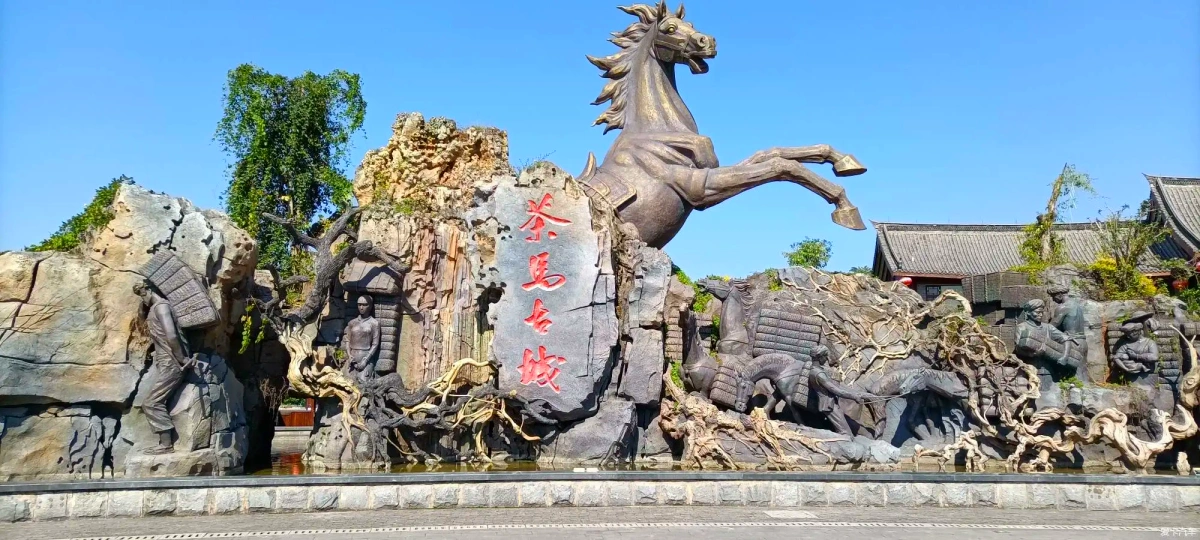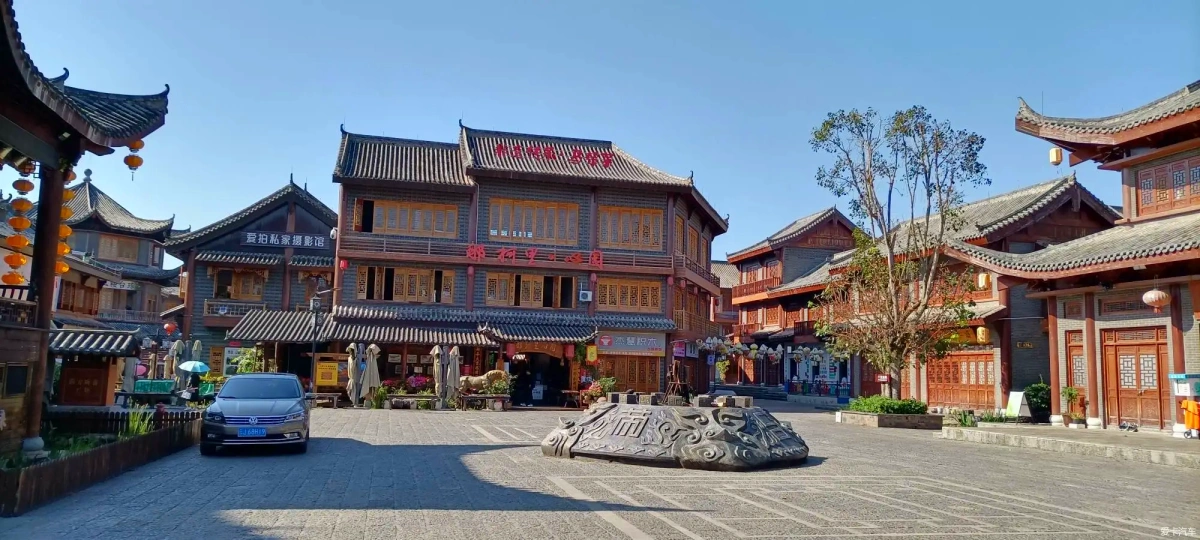Chama Old Town (Tea Horse Old Town) in Puer city
Overview of Chama Ancient Town
Chama Ancient Town茶马古城, located in the Simao District of Pu’er City, Yunnan Province, is a renowned historical and cultural city in China. It is named for its significant position on the Tea Horse Road and serves as a multifunctional tourist area integrating commerce, travel, and leisure. Nestled by mountains and water, the town features a beautiful environment and convenient transportation, making it one of the most spectacular ancient towns in Pu’er.
Historical Significance
Chama Ancient Town has a long history dating back to the Tang Dynasty. It was a crucial post on the southern Tea Horse Road and became a key hub for Tea Horse trade, earning it the title of a model city on the Tea Horse Road. The town’s prosperity due to the Tea Horse Road is highlighted by the “Chama Ancient Town Fu” inscribed in the ancient city square.
Architectural Features
Upon arriving at Chama Ancient Town, visitors are greeted by a magnificent group of ancient buildings. The grand Chama Ancient Town Square features a rockery with mountains, fountains, flying horses, and flowing water. The town showcases traditional Chinese urban architecture with a tower, simple and charming city gate, brick and stone city walls, temples, courtyards, shops, and stables. The ancient bluestone streets and pathways add a touch of mystery and historical ambiance.
Cultural and Tourist Attractions
The ancient buildings in Chama Ancient Town are arranged in an orderly manner, creating picturesque scenes of small bridges and flowing water, resembling a classic Chinese garden. The town’s color palette includes traditional Chinese colors like red-brown, yellow, gray-blue, and black-gray, with brick and wood structures, courtyards, pavilions, and decorative details such as Qing bricks and dark tiles. The town also features beautiful flower-shaped umbrellas and traditional poetry.
Chama Ancient Town is a popular nighttime cultural and tourism consumer area with streets lined with tourist commercial streets, specialty dining streets, and charming bar streets. Visitors can enjoy a variety of experiences including intangible cultural heritage products, Pu’er tea, coffee culture products, cultural and creative products, crafts, and displays of horse caravan culture.
Ecological Environment and Scenic Beauty
Chama Ancient Town boasts an excellent ecological environment and mountain-water scenery. The Pu’er River, Dianchi Lake, Nanhua Mountain, and Pujiang River pass through the area, showcasing Yunnan’s natural beauty. Visitors can enjoy activities such as the Strawberry Bear, Big Yellow Duck, Banana Boat, flyboarding, and jet ski drifting, with every snapshot becoming a masterpiece against the backdrop of blue sky and white clouds.
Tea Horse Road Heritage
Chama Ancient Town is a crucial hub for ancient Tea Horse trade and preserves old temples, Qing Dynasty government buildings, traditional residences, and ancient trade sites. The Tea Horse Road Museum, the largest and most comprehensive museum of horse caravans in Southwest Yunnan, showcases the history, culture, and influence of the Tea Horse Road. The museum displays pack horses used by traders and allows visitors to experience the journey of the Tea Horse Road traders firsthand.
Historical Challenges and Significance
The Tea Horse Road, which began with horse markets in the early Tang Dynasty and flourished with tea-horse exchanges during the Song Dynasty, is a trade route that wound through Yunnan, Tibet, Sichuan, and other provinces. The road faced numerous challenges, including harsh weather, treacherous terrain, poisonous plants and water, wild beasts and insects, epidemics, and bandit attacks.
The road is a unique and colorful natural and cultural route with international influence, representing a heritage of nature and culture contributed by the Chinese nation. The Tea Horse Road, with its centuries-old history, not only served as a distribution path for Pu’er tea but also contributed to its fame.
Legacy of the Tea Horse Road
The Tea Horse Road, driven by tea and horse caravans, is a path of cultural exchange with features such as tea appreciation, pioneering spirit, tolerance, mutual benefit, and peaceful coexistence. It remains a significant historical route connecting ancient and modern times, continuing to serve as a path of exploration.
Conclusion
Chama Ancient Town, with its rich history and cultural connotations, serves as an important window to understand Pu’er’s history and culture. It stands as a testament to the ancient Tea Horse Road, carrying forward the traditional charm and cultural significance of this historic trade route.















